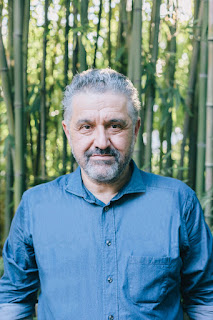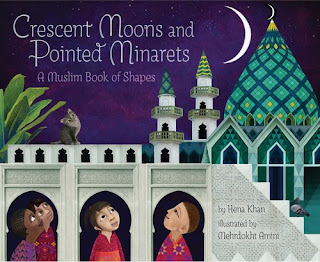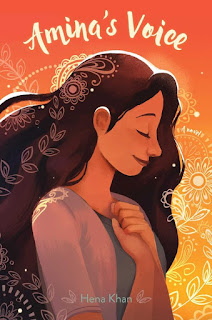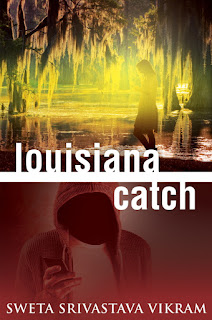Q: Why did you decide to write this book?
A: In 1980 my son Victor, my oldest son, died in a hiking
accident in Yosemite. I was already a grief counselor and a dance movement
therapist. I found that nothing I knew professionally did anything to help with
the devastation, the shattering of my heart.
I’m blessed, I had a husband and two other beautiful
children, but at the time I didn’t think I could live. There are no guidelines
for how you live the rest of your life with a broken heart.
I vowed that if I could find the answers, I would share them
with as many bereaved people as possible. I reached out to mothers who had
experienced the sudden death of their child. They are the experts.
I didn’t intend to write a book. But after I did my doctoral
dissertation, I interviewed many mothers, and their words were like jewels to
me. I couldn’t believe their meaningful words.
People were telling me it was unusual at the time to have
your dissertation become a book but why don’t you try. I spent about 10 years,
and I said I don’t know how the book should end. Or the title. I could only
think of, "The Death of a Child Sucks."
I put the manuscript, 1,500 pages of my own story and my
research, and put it in storage.
Three years ago, I had a powerful dream, a man’s voice
saying to take the manuscript out of storage and get it published now. I was
about to be 75. My husband and I went to the storage, and found the box with
the research and the manuscript papers. I stared at it for two weeks. I hadn’t
worked on the book for 15 years.
I finally opened it up, and looked in the box, and there
were all the quotes from the mothers, the information—it was as alive as it had
been, and the book started writing itself. I couldn’t get it to stop.
During the last three years, I interviewed 46 other
people—fathers, grandparents, siblings. In meditation one day, I had a
meditation that the title came to me. I knew it was going to happen.
Q: In the book, you share your own experiences after the
loss of your son. What do you hope readers absorb from the tragedy faced by
your own family?
A: One of the things I realized is that [when I first worked
on the book] I hadn’t lived long enough to know how the book should end. Now it
will be 38 years since Victor died.
One of the first things I would like readers to know is that
the book is for anyone who’s lost anyone they loved. We do not have to grieve
alone. Reaching out to other people who have faced unspeakable loss is so
important.
More important than anything, what I know from my own
experience and other people’s, is that even though the physical body dies and
our challenge is to live without the physical body, our love does not die, and
will continue as long as we are alive.
So many people think if they do not stay in touch with their
pain, they will love touch with their loved one. And that’s not what’s
happening. Our relationship transforms--there’s the spirit, the soul, memory,
dreams, that keep us connected to our loved ones.
Another thing is that grief is not a contagious disease,
it’s not a pathology, it’s not a condition that needs to be fixed or recovered
from. It is part of a process, a response to the loss of someone we no longer
have. The grief is the engine for healing.
Grief is terrifying—it can feel like we have a flu. On every
level of our being, grief can affect us. To not fight against it, Sheryl
Sandberg after her husband died said to lean into the grief. What that means to
me is not that you like it, but that you surrender to a process you have to go
through to get through it.
Grief is something we have to almost embrace. Especially
with the death of a child, there’s no timeline. It’s a lifelong experience. It
changes. It doesn’t go away, but it gets softer. It’s like sea glass, it gets
softer over the years, and grief is the same way.
One of the reasons I finally wanted to write the book is to
bridge the gap between the bereaved and the non-bereaved, to take some of the
stigma away from having a child die.
When it is suicide or murder, there is a stigma. Having a
child die is a stigma—no one wants to mention it. I wanted to take it out of
the closet. Children are dying all over the world. In so many different ways,
at so many different ages. At whatever age. Even if the child is 40, 50, 60.
Q: How have people reacted to the book?
A: It was incredible and surprising to me—when I first
started, and I showed it to people in the industry, they said, nobody wants to
read about grief. That’s not the reaction I’ve gotten to the book. It’s been
overwhelmingly positive. People have embraced the book.
It’s helped bring the idea of a child’s death out of the
closet. When I was writing the book, a friend called me one day, and whispered,
Did you know Melissa had a child die? I said, I didn’t, but why are we
whispering? She said, I don’t want to gossip. I said, telling me a child died
is not gossip.
That’s part of why I had “the unspeakable” [as part of the
title]. Bereaved parents and grandparents love to speak about their child. Other
people are so afraid: I don’t want to bring up their pain. Bereaved parents
will tell you that the pain is already there.
The Compassionate Friends is a nondenominational
organization started by an Anglican priest in England in the ‘70s…An American couple
in Florida had a child die in a train accident. The mother was suicidally
depressed. She heard about the priest, Simon Stephens, and he came and stayed
with them.
That began The Compassionate Friends, 41 years ago. Now
there are 600 chapters across the country. I had the honor to be one of their
keynote speakers. It’s a very important organization. Group support is not for
everyone, but grief support is.
Another organization,
Open To Hope, was started by Gloria
Horsley and her daughter Heidi Horsley, when Gloria’s son Scott died.
Q: What are you working on now?
A: The only other book I thought I might do is a book on
poetry from parents. Their words are such gems. I put them into poetry form.
That’s one of my wishes, to have that book come out. Now I’m focused on The
Unspeakable Loss, and getting it out in the world.
Q: Anything else we should know?
A: The book is written in a question and answer format so
people can read the book by picking it up and skimming it, looking for a
subject they are interested in at the moment. It’s something that can be given
[to someone who is bereaved] a week or a day after their child dies, or years
later.
Often we have grief brain. I wanted it to be something
people could pick up according to where they are in the process.
It also has a section if you’re the friend or family
member—what to say and not to say. People want to be loving and supportive, but
they say things that are not loving and supportive because of lack of
knowledge.
Also I think of the book not as my book but as our book.
There are so many experiences and wisdom from other parents and families. It’s
a collaboration of other people wanting to help.
I narrated the book—it is on all the Audible sites. It is
six hours when recorded….
Grief can change you. You have so many choices about how to
life after your child dies. You can open your heart to other people who have
sorrow, not to be afraid but to go toward life and love. The book is really
about the choice to go toward life and loving.
--Interview with Deborah Kalb


































